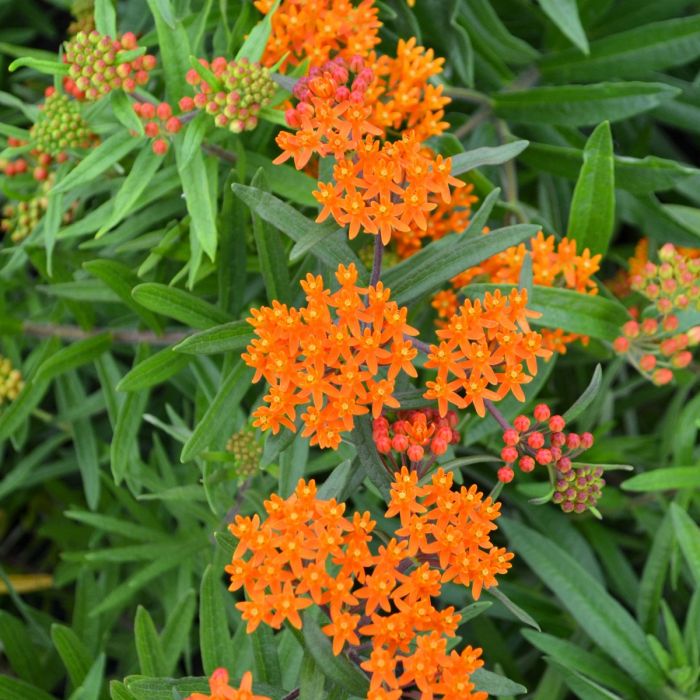The Garden Scoop – 2025 Year of the Milkweed
Why would a leader in the Gardening Industry choose a “weed” as their choice for perennial of the year? Easy, it’s not a “weed” but it can be abundant! I’ll have more on that in a moment…





2017 Perennial Plant of the Year. Tap rooted and drought tolerant native prairie plant, this plant excels during summer heat. Bright orange flowers for pollinators from mid to late summer. Plant in well drained soils.
Discover an unparalleled selection of perennials at Gertens! With the largest variety in Minnesota, we offer endless options of colorful perennials, natives, and pollinator plants to beautify your garden year after year. From vibrant flowers to lush foliage, our perennials are perfect for adding beauty and charm to your outdoor space. Visit Gertens today and see why we're known as Minnesota's Destination Garden Center!
Butterfly Weed | Asclepias tuberosa
Height: 24 inches
Spread: 18 inches
Sunlight: Full Sun
Hardiness Zone: 3a
Brand: Gertens
Description:
Native prairie plant. Bright orange flowers appear mid- to late-summer. Drought resistant plant.
Ornamental Features
Butterfly Weed has fragrant orange flat-top flowers with gold overtones at the ends of the stems from mid to late summer. The flowers are excellent for cutting. Its narrow leaves remain green in color throughout the season.
Landscape Attributes
Butterfly Weed is an herbaceous perennial with an upright spreading habit of growth. Its medium texture blends into the garden, but can always be balanced by a couple of finer or coarser plants for an effective composition.
This is a high maintenance plant that will require regular care and upkeep, and is best cleaned up in early spring before it resumes active growth for the season. It is a good choice for attracting butterflies to your yard, but is not particularly attractive to deer who tend to leave it alone in favor of tastier treats. It has no significant negative characteristics.
Butterfly Weed is recommended for the following landscape applications;
Planting & Growing
Butterfly Weed will grow to be about 24 inches tall at maturity, with a spread of 18 inches. It tends to be leggy, with a typical clearance of 1 foot from the ground, and should be underplanted with lower-growing perennials. It grows at a medium rate, and under ideal conditions can be expected to live for approximately 10 years. As an herbaceous perennial, this plant will usually die back to the crown each winter, and will regrow from the base each spring. Be careful not to disturb the crown in late winter when it may not be readily seen!
This plant should only be grown in full sunlight. It is very adaptable to both dry and moist locations, and should do just fine under typical garden conditions. It is not particular as to soil type or pH. It is highly tolerant of urban pollution and will even thrive in inner city environments. This species is native to parts of North America.
| Common Family Name | Butterfly Weed |
|---|---|
| Gerten Grown Plants | Gerten Grown Plants |
| Available for Pre-Order | Yes |
| MN Native Plants | MN Native Plants |
| Sun Preference | Full-Sun |
| Bloom Time | June, July, August |
| Mature Spread (Range) | 12" - 24" |
| Mature Height (Range) | 13" - 24" |
| USDA Hardiness Zone | 3, 4, 5, 6, 7 |